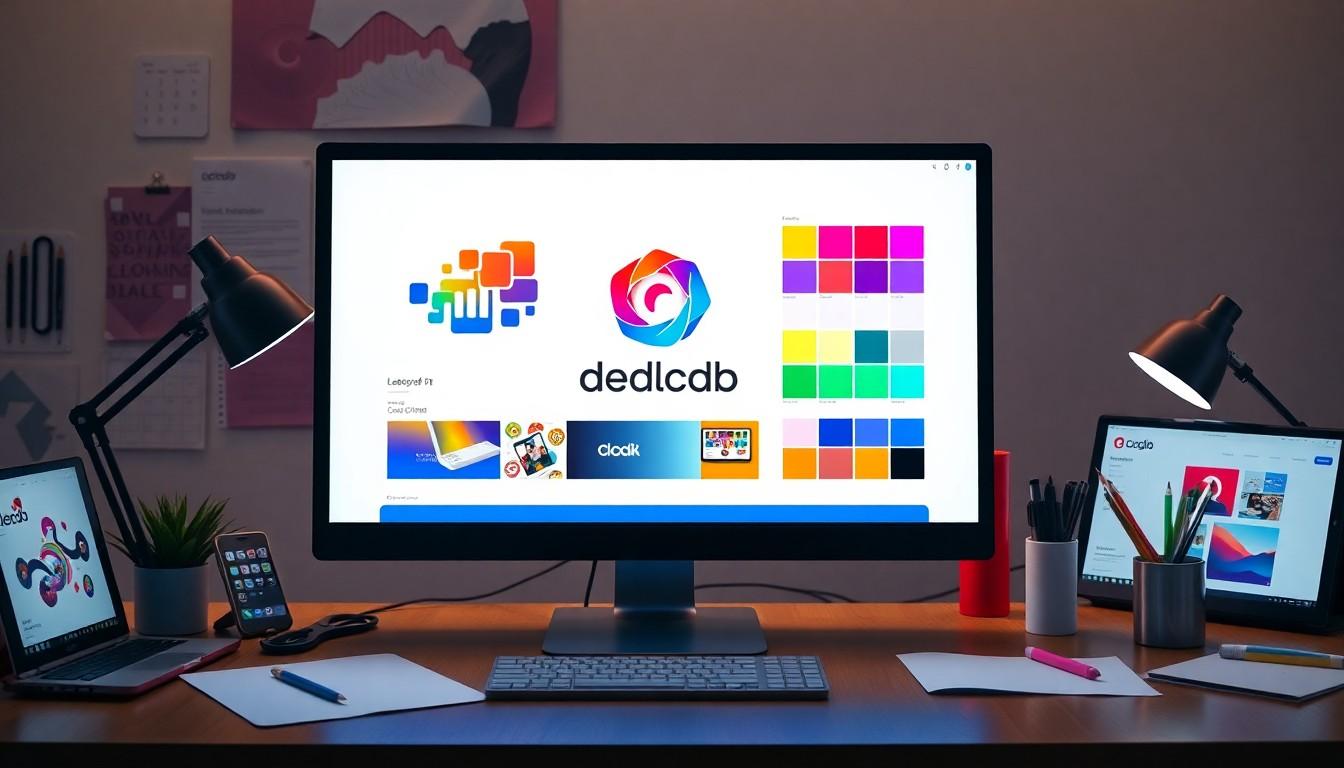
Branding and Website Design: Unlocking the Secrets to Business Success
In today’s digital jungle, a strong brand and a killer website are like peanut butter and jelly—perfect together. When a business nails its branding, it creates a personality that sticks in people’s minds. Pair that with a well-designed website, and you’ve got a recipe for online success that even a chef would envy.
Branding And Website Design
Strong branding combined with effective website design significantly impacts a business. Together, they form a coherent identity that attracts and retains customers.
Establishing Brand Identity
Establishing brand identity requires clarity in messaging and visuals. A consistent logo and color scheme foster recognition and trust among consumers. Companies that present a unified brand across all platforms create familiarity. Familiarity leads to consumer loyalty, which is essential for long-term success. Clear differentiation from competitors emerges through effective branding strategies. Consistent voice and imagery in web design further reinforce the brand’s unique personality.
Enhancing User Experience
Enhancing user experience is crucial for retaining visitors on a website. Intuitive navigation guides users seamlessly through content, encouraging longer visits. Fast loading times reduce bounce rates and keep potential customers engaged. Responsive design ensures optimal viewing on any device, increasing accessibility. Interactive elements, like calls to action, drive desired behaviors, leading to conversions. Effective use of whitespace and visuals contributes to a clean and inviting layout, strengthening overall user satisfaction.
Key Elements Of Effective Branding

Effective branding hinges on several key components that create a memorable and recognizable identity. Focusing on these elements leads to a cohesive representation that resonates with target audiences.
Logo Design
A logo serves as the face of a brand. It encapsulates the essence of a company in a simple yet meaningful graphic. Utilizing unique and relevant symbols enhances brand recognition. Strong logos often incorporate shapes, text, and colors that align with the brand’s message. Furthermore, a well-designed logo maintains scalability for various applications, from business cards to websites. This adaptability ensures visibility across platforms, fostering familiarity and trust.
Color Schemes
Color schemes significantly affect consumer perception and emotions. Different colors evoke distinct feelings, influencing brand identity. For instance, blue often conveys trust, while red evokes excitement. Choosing a consistent color palette helps reinforce brand recognition, especially when applied across marketing materials. Utilizing complementary colors creates visual harmony, enhancing user engagement. Establishing a recognizable palette facilitates recall, allowing consumers to easily associate colors with the brand. A thoughtful approach to color scheme design can deeply impact consumer loyalty and perception.
Integrating Branding Into Website Design
Integrating brand identity into website design is crucial for establishing a memorable online presence. Each aspect of a website should reflect the brand’s essence.

Consistency Across Platforms
Consistency across platforms solidifies brand identity. Logos, colors, and messaging should remain uniform whether on social media or a website. Maintaining visual cohesion helps consumers recognize the brand instantly. The familiar experience fosters trust and loyalty, encouraging repeat visits. Varying elements across different mediums can confuse customers, detracting from the brand message. Companies achieving consistency also streamline their marketing efforts, ensuring their narrative resonates effectively. Brands presenting a unified front perform better in terms of engagement and conversions.
Typography Choices
Typography choices significantly influence user perception and brand representation. Different fonts convey diverse emotions and styles, impacting how users engage with content. Sans-serif fonts often reflect modernity and simplicity, while serif fonts may evoke tradition and reliability. Ensuring legibility enhances the overall user experience, which keeps visitors focused on content. Aligning typography with the brand personality enhances memorability. Consistency in font usage across all platforms promotes a cohesive visual identity. Integrating distinctive yet readable typography contributes to a brand’s unique presence, driving recognition and enhancing overall engagement.
Best Practices For Branding And Website Design
Emphasizing best practices in branding and website design ensures a powerful digital presence. Adopting these strategies can significantly enhance user engagement and brand loyalty.
Responsive Design
Responsive design remains essential for modern websites since users access them via various devices. Ensuring that layouts automatically adjust to different screen sizes enhances readability and usability. Utilizing fluid grids offers a flexible layout that maintains aesthetics across devices. Adopting responsive images guarantees optimal loading without compromising quality. Testing responsiveness frequently fosters a user-friendly experience, encouraging longer visits. Integrating media queries allows specific styles for various devices, enhancing overall appearance. Businesses that prioritize responsive design attract a more extensive audience and increase conversions.
Load Speed Optimization
Load speed plays a crucial role in user experience, as slow websites lead to higher bounce rates. Compressing images helps reduce file sizes, improving load times significantly. Minifying CSS and JavaScript files streamlines code, allowing faster rendering. Utilizing a content delivery network (CDN) enhances the speed at which content is delivered to users. Additionally, enabling browser caching ensures repeat visitors experience quicker loading. Prioritizing load speed directly impacts search engine rankings and user satisfaction. Emphasizing these techniques cultivates a seamless browsing experience that keeps users engaged.
A strong brand paired with effective website design is essential for any business aiming for online success. This combination not only enhances visibility but also fosters trust and loyalty among consumers. By ensuring consistency in branding elements such as logos, colors, and typography, businesses can create a memorable identity that resonates with their audience.
Moreover, prioritizing user experience through responsive design and fast load times can significantly impact engagement and conversions. When businesses invest in both branding and website design, they position themselves to stand out in a competitive market. Ultimately, a cohesive approach to these elements can lead to lasting relationships with customers and sustained growth.
